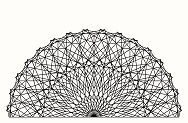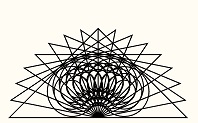


 |
 |
 |
Evolution is a broad subject which requires a broad study. But scientists do not do broad studies, they do narrow studies. So they get a lot wrong in relating to broad elements of evolution. An example is a need to study agriculture to understand soil and how biology grows out of soil and evolves in soil. Biology and agriculture are two different subjects. I started college in agriculture and switched majors to microbiology. Morel mushroom scientists never noticed that the morel only grows in sandy soil or the equivalent. They don't know why it would matter. It matters because sandy soil has no capillary action, so it does not dry out a few millimeters below the surface. The morel does not tolerate dehydration, because it evolved from a yeast and yeasts do not tolerate dehydration. Agies live the soil—its capillary action, how water and oxygen flow in and out, how decay progresses and how soil biology is occurring. Scientists can't miss that subject and understand how biology grows out of the soil. Evolution biologists missed the role of grass in shaping modern biology when the dinosaurs died out, because they have no concept of what grass is without an agriculture background. The broadest subjects in science include the most errors, because science is studied by looking through a straw. Scientists usually cannot evaluate subjects outside an extremely narrow area that they study. Not only do they make wrong guesses, they pick up errors noncritically and build upon them rather than correct them. Soil Origins An example is the claim that clay was created by the weathering of rocks. Only feldspars have similar elements as clay; and they are not as evenly distributed as clay. There is a thin layer of clay, about one or two feet deep, that covers the entire earth except where it was washed away or covered by volcanic debris. Below the clay is ocean sediments, glacial till or shale. Clay has approximately the same composition as shale, while the texture varies. The nature of texture is too mysterious for scientists to comprehend. Somehow, that substance took the form of shale while earth was forming but took the form of clay when a planet exploded. Environmental conditions created the difference, which could have included a different gaseous chemistry during precipitation. Shale was created early in the formation of the earth, as it goes deep below the surface. Clay is a very shallow layer on the surface, unless glaciers churn in under. There are numerous lines of evidence that show that clay was created by a planet exploding at the time of the Cambrian transition into complex biology 541 million years ago. The clay came down from the sky. The very thin layer of clay on the surface of the earth indicates that the clay came down from the sky relatively recently. One line of evidence is that animal life in the oceans was being subdued by a shortage of minerals. When the planet exploded, a variety of minerals rained down onto the earth, which would have been the primary factor allowing biology to take off. Also, at that time, plant life was not able to grow on the earth's surface due to the hardness of the surface. Shale is too hard for plants to grow on. Cyanobacteria existed for a long time in stagnant water but could not adapt to the surface due to the hardness. Those precursors to algae invaded the land at the same time sea creatures became complex, 541 million years ago. Dinosaur Evolution Evolution biologists don't know why dinosaurs got large. Their theories are varied. They don't realize that evolution is shaped by environments. The environment that made dinosaurs large was nonwoody brush which they ate. It takes a lot of size and power to tromp through brush. The size of dinosaurs makes a clear statement on the prevalence of the brush: it wasn't something they could go around; they had to tromp through it. It is noticeable that dinosaurs did not have fat. They were too tall and boney. They could have benefitted from fat, since they needed a lot of weight. Elephants are fat and show the need for fat for tromping through brush. It means fat evolved after dinosaurs, which would have been a result of yeast physiology which is prone to producing fat. Yeasts evolved after dinosaurs died out. Paleontologists are way behind the times, because they look at nothing but bones. They still try to put dinosaurs on evolutionary trees which connect them all through branches. The evidence is extremely clear that those branches do not exist. The branch points run back way before dinosaurs existed, which results in parallel branches which have no, or few, connection points during dinosaurs years. This is why the claim that birds evolved from dinosaurs is idiotic. There are no "evolved froms" in the absence of connected branch points. It's all parallel evolution with common ancestors running way back in time. There were a few feathered dinosaurs, but they show nothing of a relationship to birds. Such common properties are acquired through horizontal gene transfer. Those genes came out of nowhere (but unrelated species) and disappeared into nowhere. They were whimsical and add nothing to the evolution of the group. Elsewhere in evolution, horizontal gene transfer spreads important characteristics around, which includes fat production entering most other species after evolving in yeasts about 55 million years ago. Sometimes, horizontal gene transfer would have been mixing characteristics between species in ways that persisted. Usually, genes picked up so whimsically do not last long. An example would be feathered dinosaurs. A longer lasting transfer would have been fat production transferred from yeasts to other species. The nonwoody brush that dinosaurs evolved in held back all evolution, until grass could shove out the brush. Grass had already begun to take over the environment when the dinosaurs died out, as evidenced by a long legged dinosaur called Anzu wyliei. The asteroid strike suppressed to brush and allowed the grass to reshape biology. Asteroid Strikes Saying that Yellowstone is a super volcano is really absurd. There is no visible lava. Super volcanoes produce huge amounts of lava. The supposed caldera is 40 miles wide but almost invisible. Calderas cannot get wide without a lot of height, some of which can collapse, and never 40 miles wide without some mountain gorge being filled with water. Obviously, Yellowstone is an asteroid strike. There appears to be two major asteroid strikes and two major super volcanoes. The timing tells a lot about them. The Chicxulub crater near the Yucatan Peninsula is associated with the dinosaurs dying out 65 million years ago. At exactly the same time, the Deccan Traps formed in India as a super volcano. There were huge amounts of lava associated with the Deccan Traps. The Deccan Traps would have been formed as the Chicxulub asteroid went through the earth and hit the mantle from below in India, as some scientists have theorized. The damaged mantle caused the super volcano to release huge amounts of lava. The Siberian Traps in Russia formed at exactly the same time as the most significant extinction event of 252 million years ago called the Permian-Triassic extinction event. The super volcano which created the Siberian Traps would have been caused by an asteroid going through the earth and striking the mantle, as occurred with the Deccan Traps. What this means is that these two extinction events were created by a combination of asteroid strikes and super volcanoes. Which contributed more to the biological extinctions—the asteroid strikes of the super volcanoes—is not clear. Both factors would have been quite influential. So there was an asteroid strike associated with the Permian-Triassic extinction event which has not been identified, and Yellowstone would have been an asteroid strike which has not been recognized. There can be little doubt that the Yellowstone asteroid strike created the Siberian Traps and the Permian-Triassic extinction event. Geologists describe the Yellowstone event as a series of volcanoes a short time ago (within 1.3 million years ago) seemingly trying to convince the kiddies that Yellowstone occurred recently. They know the underlying layers have been moving westward for a long time, but they can't quite get the pieces connected or a time frame extended back far enough. Perspectives On Human Evolution Scientists who study human evolution largely look at fossil bones. They don't quite grasp the fact that all evolution is shaped by changes in environments. Normally, evolution biologists realize that evolution exists in large leaps and slow change, but they don't quite relate this fact to environmental influences. Contrarily, the tendency is to view evolution as a series of mutations which are acted upon through natural selection to improve survival characteristics. Instead, what is happening is that changes in environmental conditions are creating the large leaps in evolution, while the smaller gradual changes are corrections required by the large leaps. In other words, there are no small changes in environmental conditions creating the gradual changes. And more theoretically, the constant mutations would not result in gradual improvements without environmental changes, because species are already adapted optimally for existing environments until drastic environmental changes occur. Slow change is not needed for optimizing adaptations without the stress created by the large-rapid changes. For specifics, scientists study human evolution by looking for more fossils in central Africa and try to piece the results into a picture of gradual change. They see nothing of the environmental influences. Here is how environmental influences shaped human characteristics. As monkeys evolved into apes, or apes became more agile, they started to move around more and go beyond localized environments. As they became more mobile, they discovered the easy pickings along the coast of south-west Africa, where large flocks of sea birds would nest on the shoreline. Those bird eggs would have been very attractive to the apes who discovered them. Nearby were coastal sea creatures to be exploited including clams and muscles. The result would have been very rapid evolution of the apes near the coast. The increase in protein and minerals would have allowed drastic evolution. Vegetarian monkeys and apes are deficient in minerals, particularly zinc and copper, as those minerals are very low quantity in the soil, and plants do not depend upon them in large quantities. Vegetarian animals (herbivores) will often eat soil to gain necessary minerals. Zinc is extremely valuable to the immune system in attacking foreign matter, and copper is important in energy utilization as required for increased activity. It means apes evolved into humans along the coast and moved inland as they became better able to hunt animals for inland protein. A few rare fossils will show a transition, because a few evolving humans could wander inland. Finding human fossils near the coast would be difficult, because hills near the coast cause the fossils to wash away. As the evolving humans moved inland they had to adapt to catching wild game and cooking with fire, which required more complex skills than feeding on coastal birds and sea creatures. Inland conditions created a significant change in environments and resulted in improved physiology utilizing improved nutrition. These principles show up in the evolution of willow and cottonwood trees. They still use very primitive seeds and lack stress response, because they found ideal niches which require no adaptive change. Modern trees evolved large seeds which store a lot of energy and preconstructed tissue, while willows and cottonwoods do not. Modern tress also measure stress to determine weak points and widen where stress is greatest, so all points have an equal distribution of stress. Cottonwoods and willows use straight-run branching unadapted for stress. In other words, such primitive trees do not change much when they find a stable environment which does not change.
|
|
|||||||||||||||||
 |
 |
 | ||
 |
 |
 |
||